

Derek Fung
Revived Ram 1500 TRX could debut on New Year's Day
15 Hours Ago
Mazda’s third-generation ute range blends the familiar with the new to create a nicer, safer, and more compelling BT-50 breed.
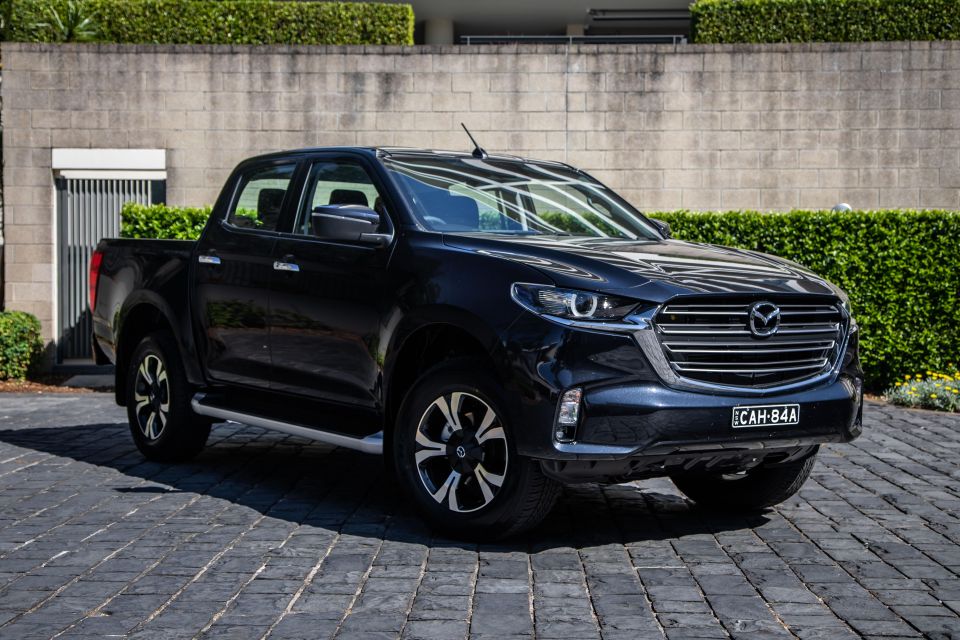
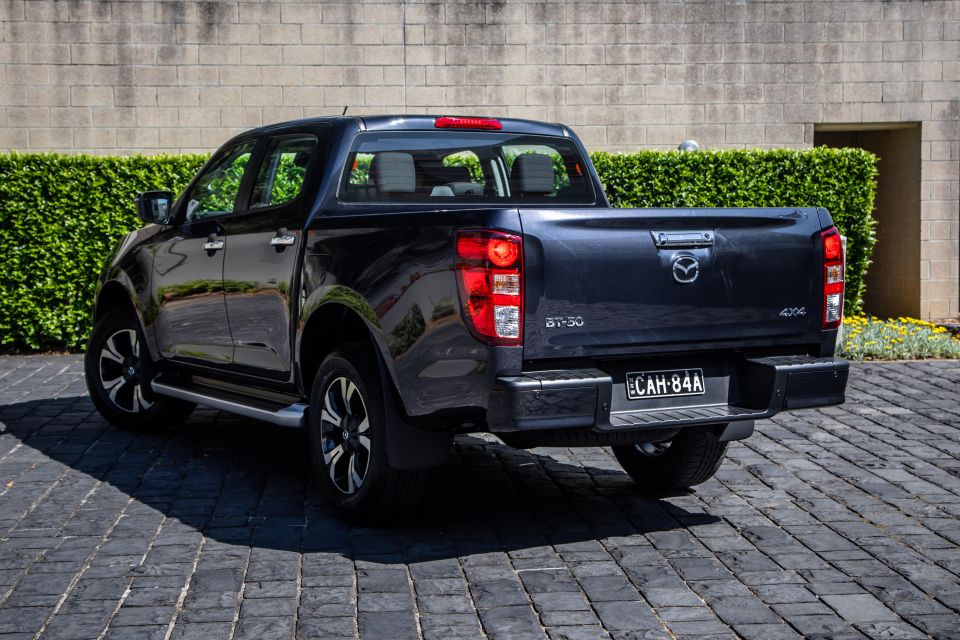

Journalist

Journalist


Journalist

Journalist
Where expert car reviews meet expert car buying – CarExpert gives you trusted advice, personalised service and real savings on your next new car.
Mazda’s third-generation BT-50 ute range has finally hit local terra firma. And first impressions are that the wholesale revamp has certainly improved the breed, and creates a compelling dual-cab ute offering.
I’ll spare you a repeat of the exhaustive backstory about its shared Isuzu D-Max DNA. Suffice to say Mazda Australia admits the BT-50 is effectively a re-skinned, restyled, and specification fiddled D-Max to a point where both ute ranges share suspension and steering tuning.
The inevitable comparison road test will shake out how BT-50 and D-Max fare against one another in detail. For this first ‘launch’ test we’re keen to assess if, by the seat of the pants, it moves BT-50’s providence along in the right direction. And whether it’s the upmarket, lifestyle-leaning choice Mazda makes out.
The first obvious port of call is appearance. Where today’s SUV trend is to adopt ute/pickup/truck styling to bolster appeal, Mazda has done the opposite.
Whether Mazda’s familiar ‘kodo’ look is ‘tough enough’ on a ute is a good forum for debate, but in the metal it’s a look this reviewer warmed to with familiarity, a nicely-resolved midpoint between the pumped-arch concept drawings and appearing like a regular old ute with a CX-9 nose cone grafted on.

It’s certainly subtler and less ostentatious than D-Max LS-U to make for a genuinely alternative choice, regardless of how common they might be in their experiences…
But not everything is equal between them. At the time of writing, with BT-50 fresh in showrooms, its Isuzu twin is facing a five-month wait on some higher-end variants.

Meanwhile, Mazda Australia remains confident it has a healthy enough supply on debut to ‘avoid’ an instant sell-out (if such a situation is commercially undesirable). Situations can, however, change quickly…
At a glance, our one-from-top XTR 4×4 auto pick-up test version is both seemingly fit for Aussie ute buyer tastes and representative of how Mazda hopes to position its new BT-50: as a comfortable, upmarket, and family-friendly ute with more of a lifestyle bent than some rivals, underpinned by genuine workaday and off-roading substance.
On the surface, it certainly appears to be a promising formula.
The BT-50 XTR dual-cab 4×4 pick-up is $57,210 before on-road costs fitted with an automatic transmission as tested here. Choosing a manual gearbox drops the outlay by $2500.
In Mazda’s three-grade hierarchy the mid-range XTR is much closer in price to the flagship GT auto ($59,990 list) than it is the low-grade XT auto ($53,260 list). XTR trim can also be had in 4×2 dual-cab pick-up form for $49,470 (list).
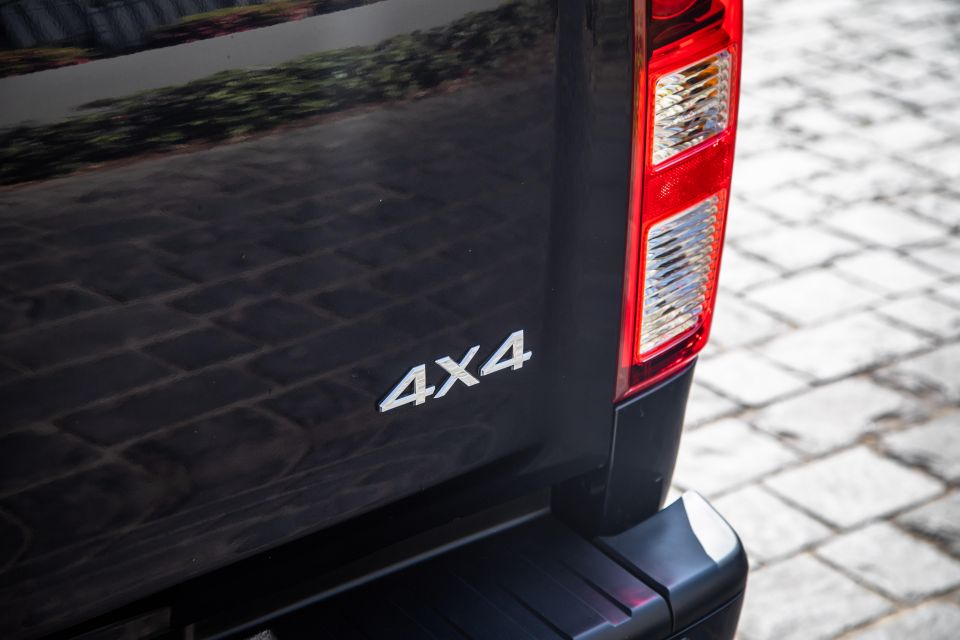
Against its logical competitor from Isuzu, the dual-cab 4×4 LS-U ute ($56,900 list), the Mazda BT-50 XTR wants a fairly modest $310 premium when comparing auto versions.
Key rivals from big-selling nameplates are the Toyota HiLux SR5 Double Cab ($59,920 before on-roads) and Ford Ranger XLT 3.2 Double Cab ($59,440 list).
Unlike some rivals the BT-50 is currently dual-cab only, though single- and lifestyle-cabs will join the local line-up if you’re willing to wait for “eventually”.
Buy your new car without the stress. It's fast, simple and completely free.

Great service from Travis and team, second time I have used this business would not hesitate to recommend them to anyone
Craig C.
Purchased a Ford Ranger in Sunshine Coast, QLD
CarExpert helped Craig save thousands on his Ford Ranger, now let us save you on your next new car.
Find a dealThe BT-50 range’s headlining update is its huge lift in safety equipment (more below), but elsewhere the XTR covers off features more or less expected for price and upper-mid-range positioning.
Outside, the XTR gets 18-inch alloys, a full complement of LED lighting including auto-levelling headlights and fog lights, side steps, underbody protection, power-folding mirrors, rain-sensing wipers, electric windows, rear parking sensors, and chrome highlights not featured on the base XT trim. The tub comes bare as standard.
Inside, the mid-range model upgrades to 9.0-inch infotainment over the entry XT’s 7.0-inch design featuring proprietary satellite navigation, DAB+, Bluetooth, a reversing camera, eight-speaker audio, and wired/wireless Apple CarPlay and wired Android Auto.
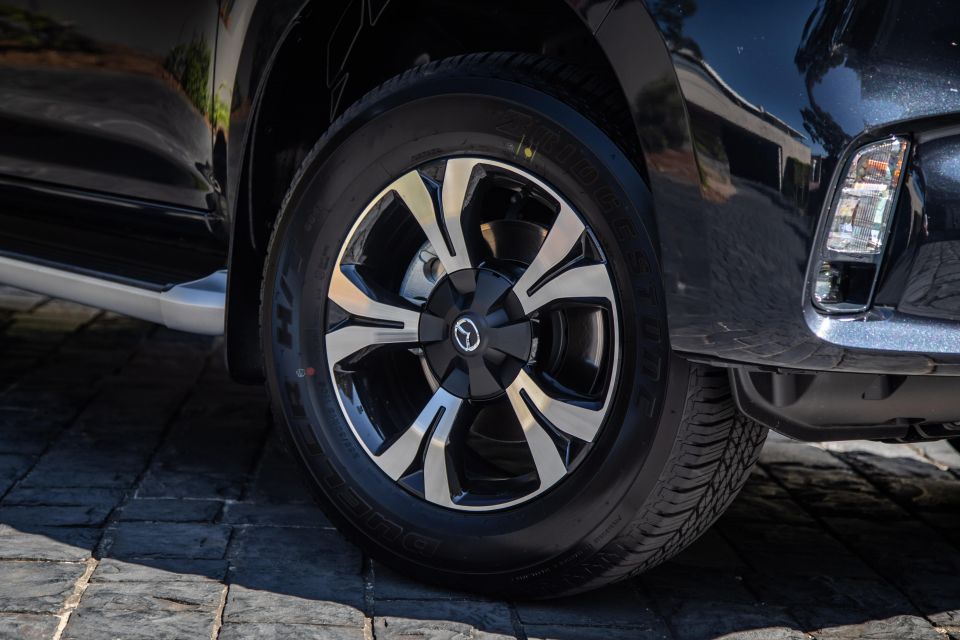
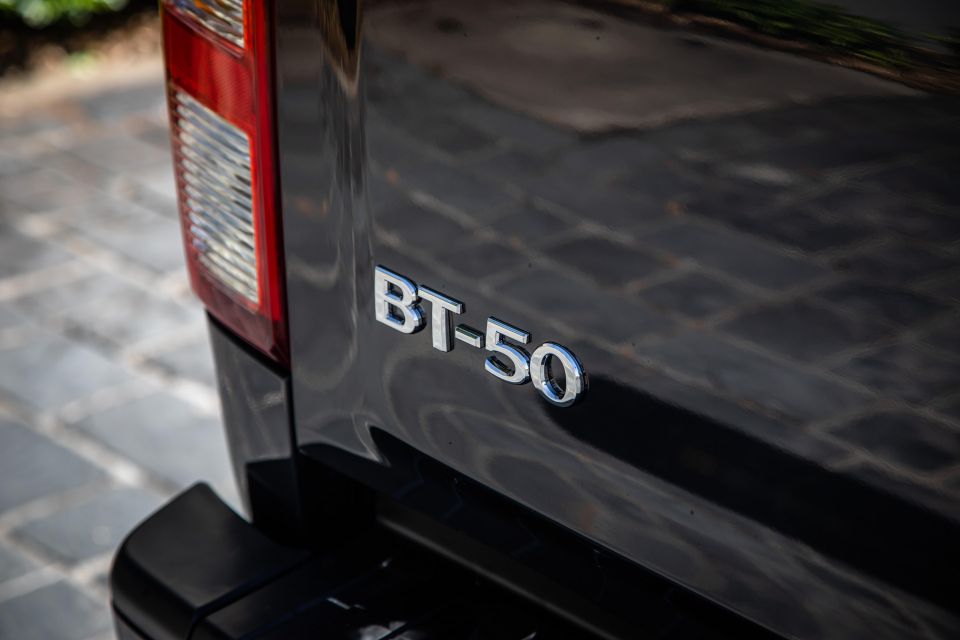
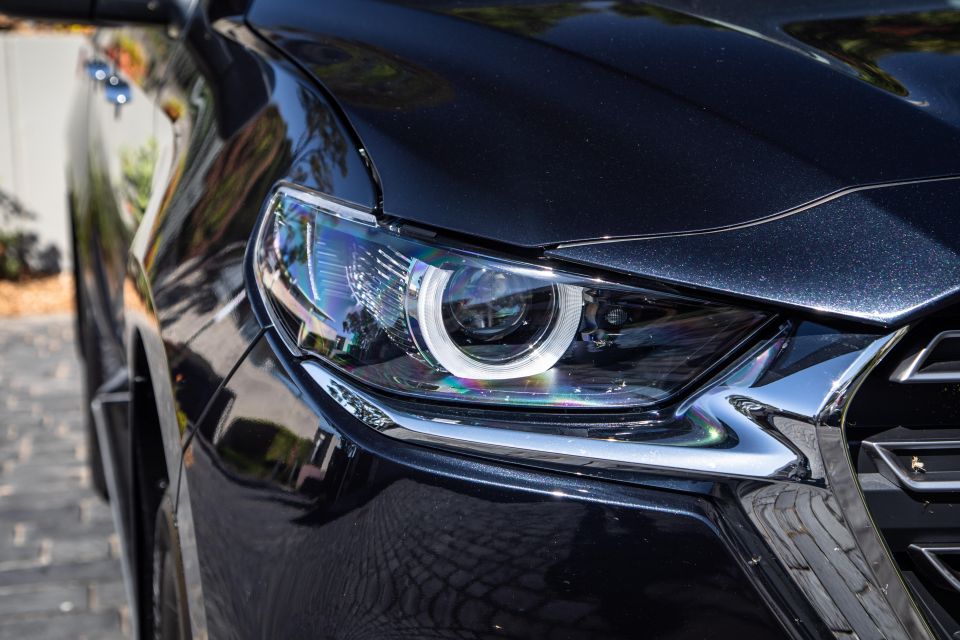
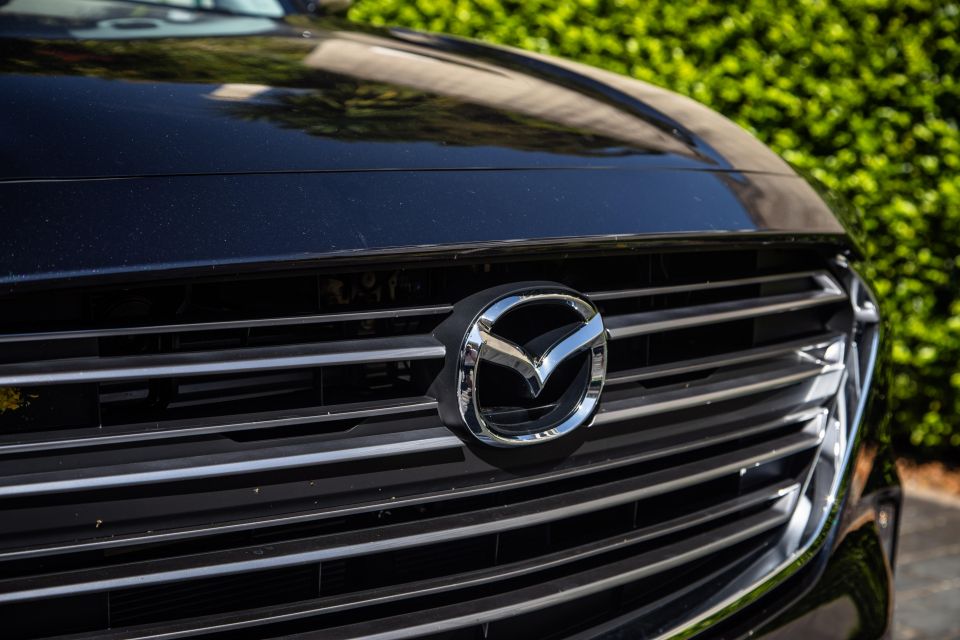
Seating is cloth with mechanical adjustment, there’s a leather-trimmed multifunction wheel, keyless go, dual-zone climate control, rear air vents, dual USB ports, a single 12-volt outlet, an auto-dimming rear-view mirror, rear under-seat storage, and a lockable tailgate.
Manual versions get regular cruise control while our auto-equipped tester features adaptive cruise with stop-and-go functionality.
The XTR’s close pricing proximity to the flagship GT means the mid-range model doesn’t lack much in the features stakes. You miss out on leather trim, electric seat adjustment and heating, front parking sensors, and mirror heating: niceties some ute buyers will happily disregard.
The BT-50 and technical twin the D-Max have really leap-frogged the competition after lagging behind in their prior generations, but to date only the Isuzu has been ANCAP tested, in September 2020, earning a full five stars.
Given the commonality in safety kit Mazda Australia is confident the BT-50 will perform very well once it is assessed. The importer suggests while some areas of the BT-50, such as the specific bonnet design, may need to be assessed it hopes most of the high-impact testing assessment can be shared with that already conducted on the Isuzu.
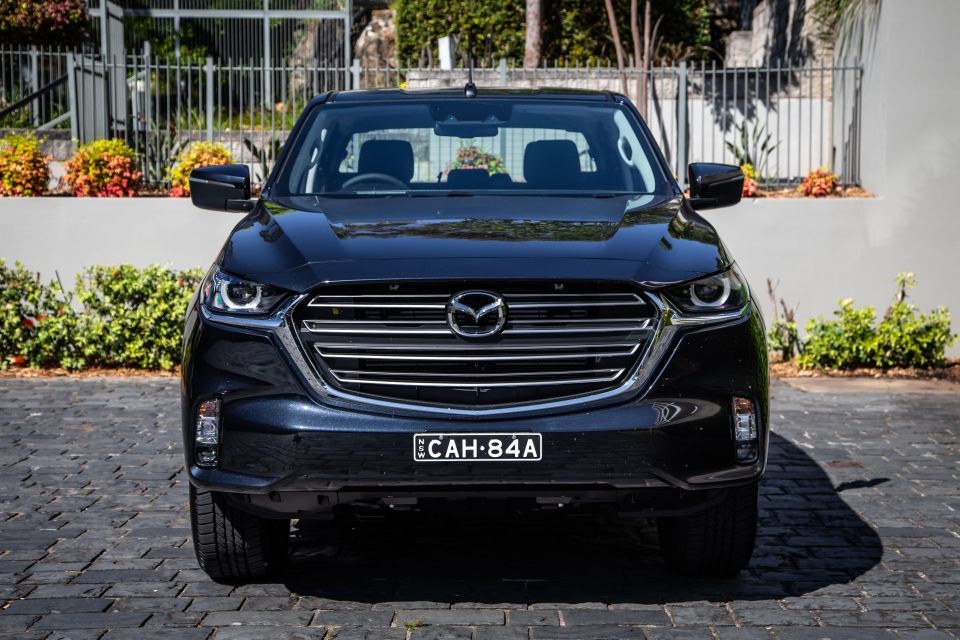
All versions of BT-50 come with autonomous emergency braking, forward collision warning, lane-departure warning, blind-spot monitoring, rear cross-traffic alert, turn assist, traffic sign recognition, and driver attention monitoring, while automatic versions add active lane-keeping assistance. Other systems bundled in include both driver-adjustable and intelligent (automated) speed limiting, hill start assist and hill descent control, and trailer sway control.
The BT-50 fits eight airbags, with the usual front, side and curtain fitment plus a driver’s knee bag and front-centre bag. There are also ISOFIX mounting points in row two.
The brakes, too, have been upgraded over the older generation with 18mm larger front discs.
Unsurprisingly, the new BT-50 cabin bears a strong resemblance to D-Max LS-U in many ways, given both conspicuously draw much of their interior make-up from the same parts bin in the same Thai assembly line.
We called the Isuzu’s accommodation perhaps “the nicest cabin in segment” at the time of review and it’s certainly a quantum leap forward for that particular nameplate. I’m not quite so enthusiastic about the BT-50, despite the bleedingly obvious synergy.

Why? Because while the XTR is pretty nice for a ute, it falls a bit short of where Mazda is today with its newer passenger car ranges – Mazda 3, CX-30 – despite being more expensive.
The cabin makes a strong first impression. The edgy horizontal theme with vertical elements, such as the air vents, is a strong design with a clear and logical layout. It just lacks a bit in fit, finish and consistency: the trim fit isn’t up to Mazda’s usual standard, the plastic colourisation is a little inconsistent and some of the execution – seat adjuster level, bin lid – is bit flimsy.
It looks ‘Mazda’ at a glance but seems more a carbon copy under closer scrutiny.
General ambience, though, is good. It doesn’t feel like a work truck or tradie spec. The steering wheel features beautifully tactile leather and the fabric seat and door insert trim are nice.
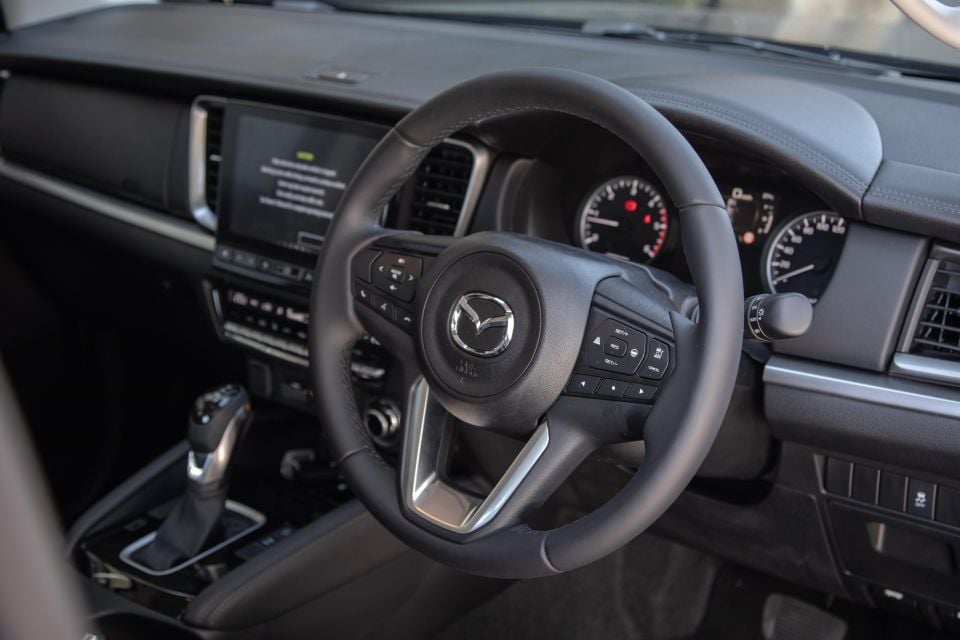
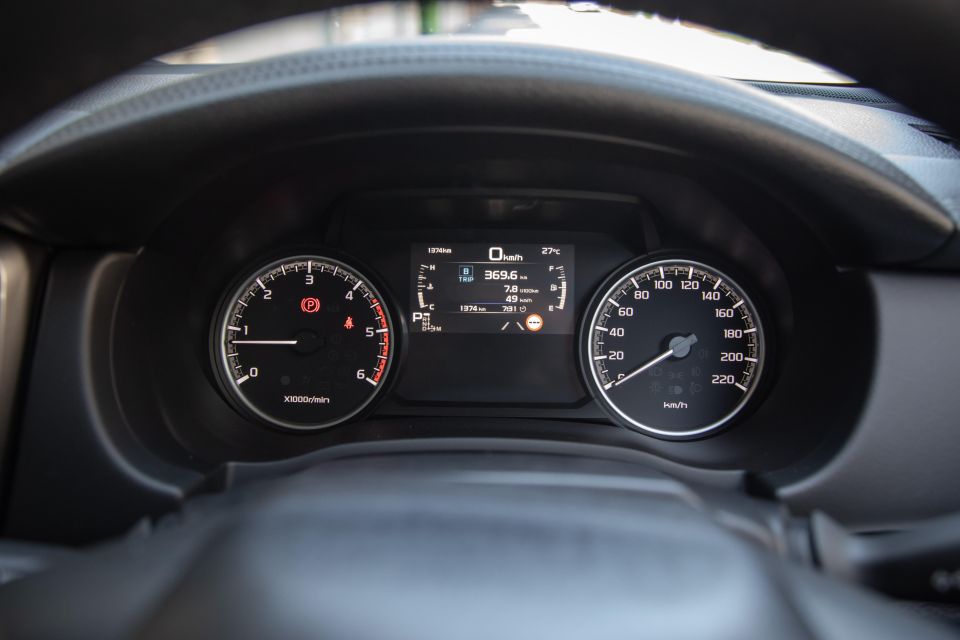
There’s an airy ambience in the first row with reasonably comfy seating, though the seat back padding is quite arched with no adjustment offered. Elsewhere, the analogue instrumentation is fairly basic and features a small trip computer screen with few frills.
The grab handles on the A and B pillars are a smart inclusion, though the BT-50 does suffer a few design faux pas. The deep cup holders don’t support small takeaway cups, the visors foul against the rearview mirror when you try folding them the down, and frustratingly the radio station search facility is locked out ‘for safety’ while BT-50 is in motion. And c’mon, why no volume knob?
Lots of nitpicking on your author’s part, perhaps, but the small stuff does impact on a near-$60,000 vehicle of all-new design. Mazda executes cabins much better for much less outlay in other ranges.
Bar the annoying radio search lockout and silly button ‘beeps’ that can thankfully be switched off, the 9.0-inch infotainment is decent enough. Audio quality is acceptable, wireless CarPlay is a real boon and the large if grainy reversing camera is quite user friendly with an expansive viewpoint for pinpoint parking.
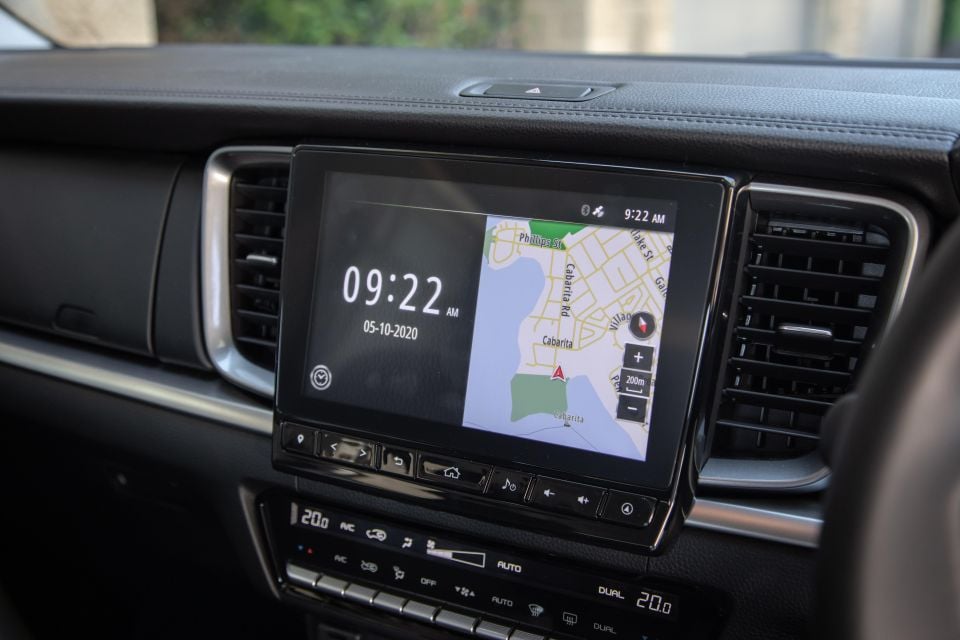

The upper glove box compartment adds to what’s a reasonable amount of stowage, including bottle holders in the doors and a cubby generous enough for the large phones with connected USB cabling.
Row two is impressive, if mainly because the relaxed rake of the seat backs makes for genuine adult-friendly comfort on long trips – something of a rarity in this segment. Rear air vents and USB power further bolster the BT-50’s family friendliness and the rear seat bench is high enough that even younger kids will be able to get a view of the outside world.
The tub measures 1571mm long, 1530mm wide and 490mm tall. Bar a scant 2mm disparity in its 1120mm measure between the inner wheel arches, it’s identical to the D-Max and comparable with a HiLux.
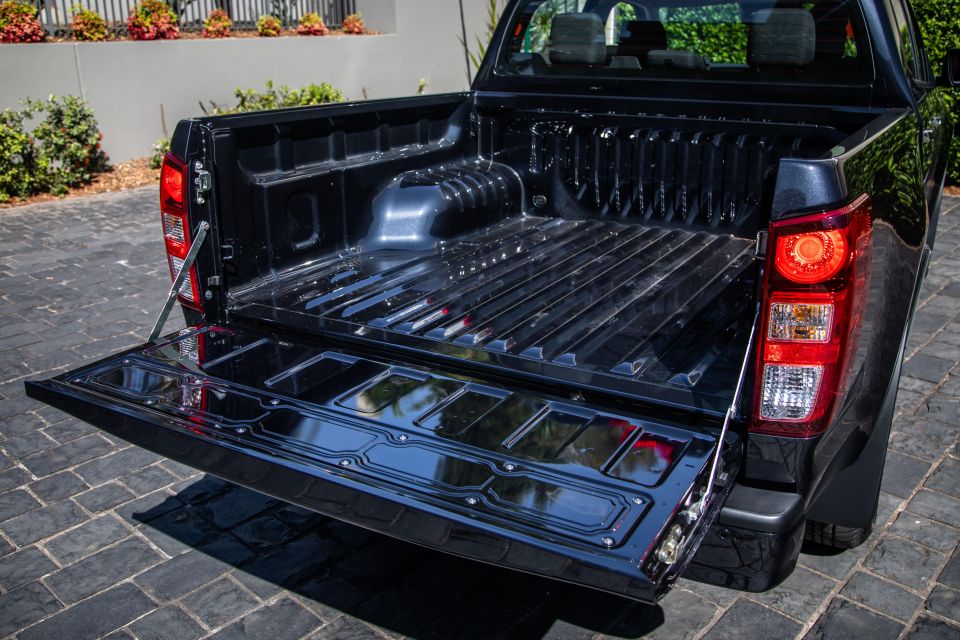
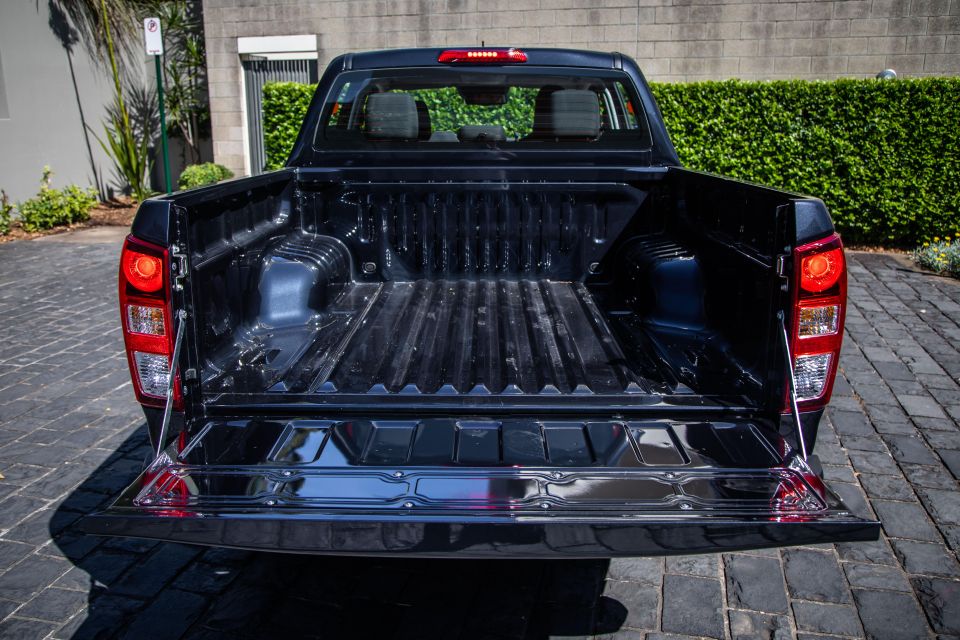
There are no integrated tonneau hooks featured around the top lip of the tub but it does feature four tie-down points and a lockable tailgate.
The new Isuzu-sourced 3.0-litre turbo-diesel four features variable-geometry turbocharger tech and produces 140kW of power at 3600rpm and 450Nm of torque between 1600-2600rpm, which is down a little on the old car’s 147kW and 470Nm 3.2-litre five-cylinder.
It’s tied to a choice of six-speed manual or six-speed automatic in the XTR, that latter transmission offering sequential manual-shift operation. The auto versions get a two-speed High/Low transfer case.
The four-wheel drive system has shift-on-the-fly functionality allowing the driver to switch between two-wheel drive and all-paw traction on the move up to 100km/h.
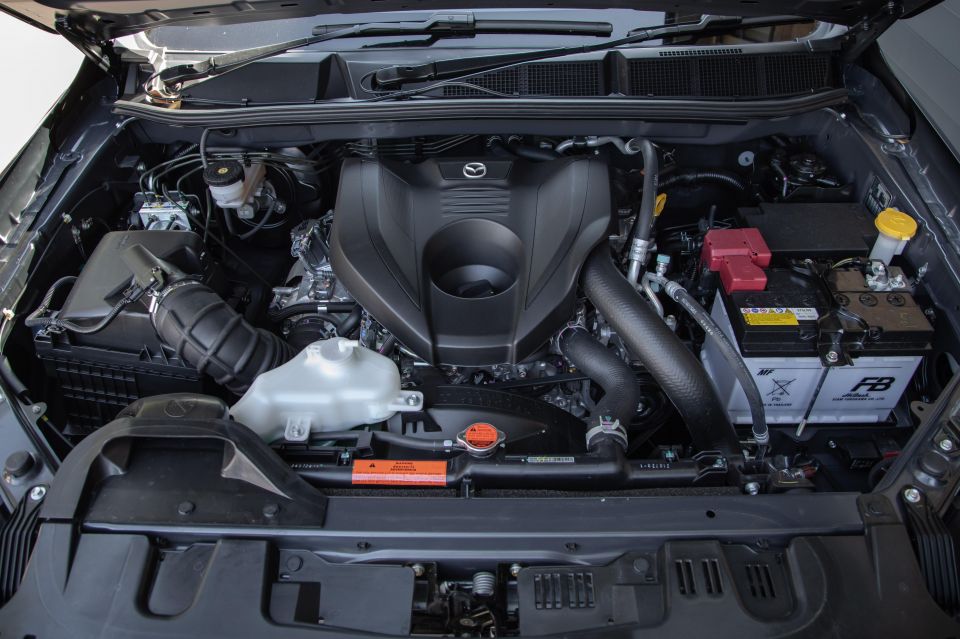
Consumption wise, all auto-equipped 4x4s come with an 8.0L/100km combined-cycle claim, which is 0.3L thirstier than most manual 4×4 variants.
On test, our BT-50 tended to hover between its combined and urban (9.8L/100km) claims according to the on-board computer, usually sitting in the eights.
Maximum payload is 1070kg for the auto version, which 15kg lighter than the LS-U auto.
As our first taste of the new BT-50 at launch and in the absence of the D-Max, the jury is out as to how much, if any, difference there is between them in the driving experience. But as mentioned, we’re armed with the knowledge the suspension and steering aren’t tuned differently between the Isuzu and Mazda breeds.
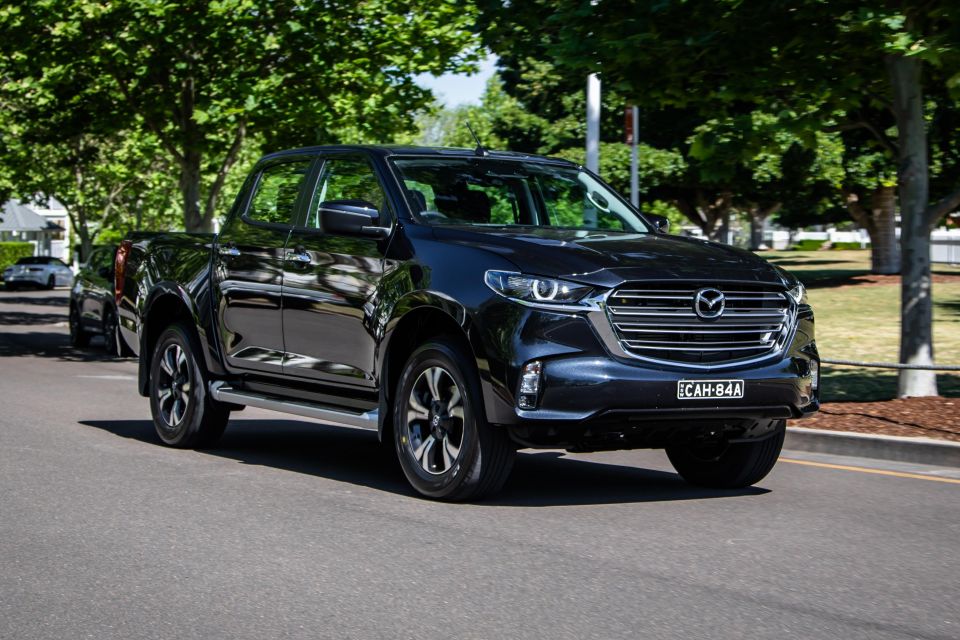
At 2030kg kerb, it’s a hefty bugger and feels as much on road. Designers specifically made the bonnet extend as far as the leading edge of the grille for visual effect, and some shorter drivers might find the BT-50 tricky to judge in tight spots. Without front sensors, it’s actually more challenging to park nose-first than it is with camera- and sensor-assisted reversing.
Much like we reported with the D-Max, the 3.0-litre diesel four doesn’t lack verve. Sink the right boot and it feels fulsome and satisfying on the boil. However, torque does build more than it punches, and with its surprisingly pliant throttle response you need to apply more right foot than seems usual to uncork the engine’s best.
This is good for low-speed modulation, if a little fatiguing on the right leg muscles on long trips or if you’re spending all day behind the wheel.
The six-speed auto is also a bit lazy to respond and slow in its changes, often-times a bit too eager to hang onto higher engine revs. It almost needs a ‘sport’ mode to inject a sense of urgency. Add in the evident (if reasonably muted) diesel chatter and the powertrain combination is neither overly agricultural nor a thing of notable refinement. Overall, it’s a decent if largely unremarkable act.
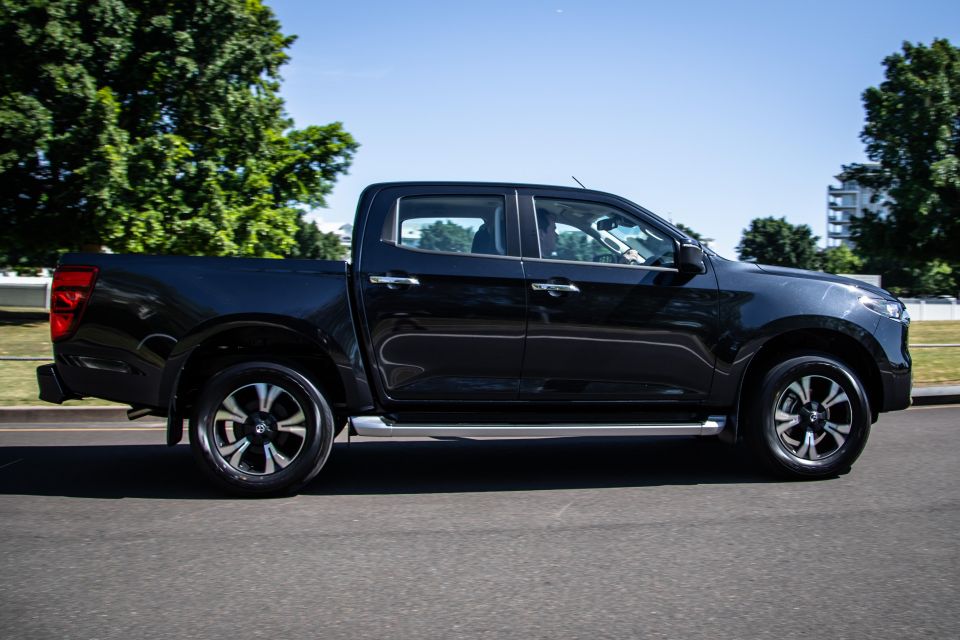
The electric power steering is beaut. It’s light if not excessively so and avoids that dull arm-burning nonsense evident in even the newly ‘fixed’ HiLux. The disc-drum brake system feels as if it’s amply purposeful and progressive without any silly excess bite.
It’s quite a well-sorted chassis, settled and composed with nicely-struck balance of ride and handling, at least by dual-cab ute measures.
Unladen ride comfort errs on the terse side of pleasant and gut feel is that it’s closer to the firmer HiLux state of tune than that of, say, the more softly-set Navara. Generally it’s settled enough but the ride does get quite fidgety at low speed around town.
There’s enough engine poke and support over the rear axle for the makings of a decent towing machine, with 350kg of download on the ball and fairly typical 3500kg braked-towing capacity as is the norm in this segment. Overall GCM is 5950kg if you’re planning on tasking its towing and lugging capabilities, while GVM is 3100kg.
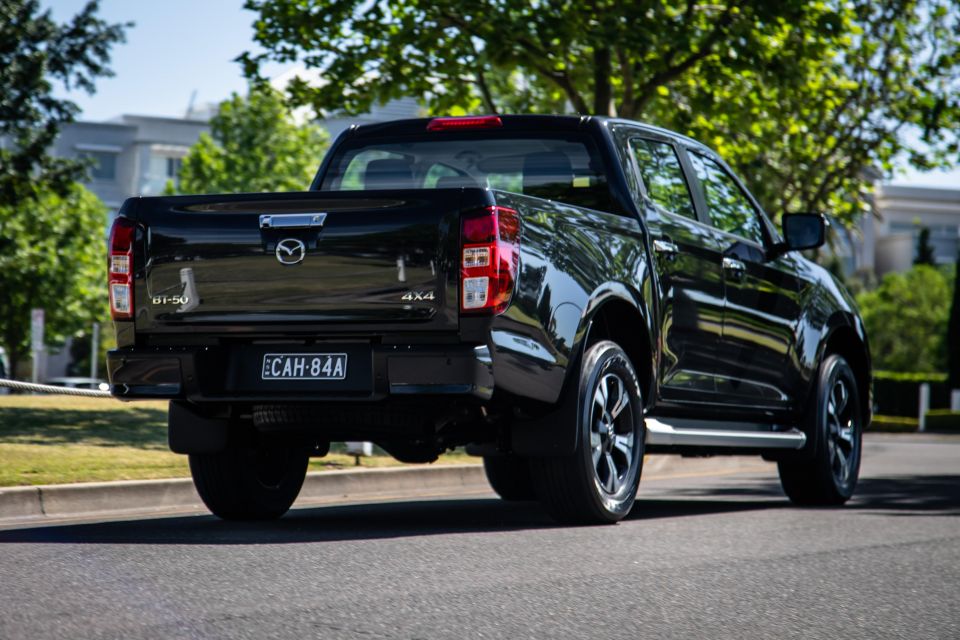
Where expert car reviews meet expert car buying – CarExpert gives you trusted advice, personalised service and real savings on your next new car.
During our relatively brief few days with the BT-50 XTR we didn’t get a chance to test the four-wheel drive chops, its ground clearance or the effectiveness of the lockable rear differential, but some of the active safety systems certainly wanted to make their presence known.
While in its review we found the Isuzu’s lane-keeping intervention came in quite late, the system in BT-50 can be aggressively counter-steer during lane-changing manoeuvres where there’s a constant gap in an adjacent lane at highway speeds. The forward collision warning behaves itself well, though the rear cross-traffic sensors will blare often at passing objects in broad proximity.
None of this is necessarily bad – the stuff actually works as described, it just takes a little acclimatising and a touch more patience than you might expect from behind the wheel.
Mazda offers five years of unlimited-kilometre warranty on BT-50, one year shy of the Isuzu’s coverage for D-Max. It also comes with five years of roadside assistance.
Servicing is required every 12 months or 15,000kms, whichever comes first. Service interval costs for all BT-50 4×4 automatic variants are $418, $390, $673, $496, and $312 for the first five services through to 75,000kms.
For the curious, its $2289 total outlay works out to be $74 pricier than Isuzu’s $2215 total for the same five years of servicing.
Despite your reviewer’s nitpicking, the verdict is that the BT-50 is good thing. And a likeable thing at that. If you don’t want to wear Tonka Tough ute auspices on your sleeves, there’s much to like compared with some of the competition.
But equally, it’s not some quantum leap in lifestyle ute comfort and upmarket polish you might mistake it to be.
That said, it’s a substantial improvement over the old generation, which was a vehicle developed in tandem with the Ranger but suffered over its lifecycle from a lack of development and evolution compared with the vastly more popular (and ultimately fitter) Ford.
This new BT-50 slots right into thick of segment with a right credentials and a price that suits it.
The heat has only just started to simmer on the inevitable ‘D-Max versus BT-50’ frivolity, but the upshot is that buyers have a choice of two fresh, solid, impressively safety-savvy options with two distinctly different emotional pitches.
Where expert car reviews meet expert car buying – CarExpert gives you trusted advice, personalised service and real savings on your next new car.


Derek Fung
15 Hours Ago


Damion Smy
4 Days Ago


Ben Zachariah
5 Days Ago


James Wong
11 Days Ago


Ben Zachariah
12 Days Ago
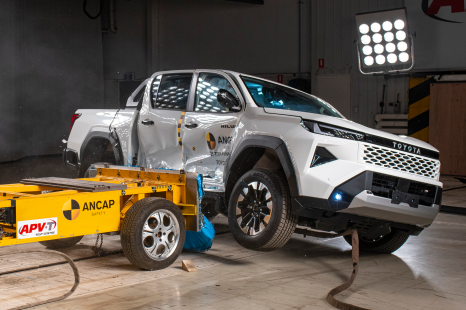

William Stopford
12 Days Ago